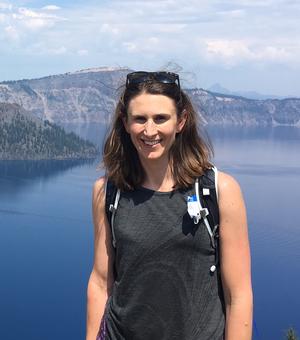Professor Victoria C. Smith
Research Interests
Tephrochronology, geochronology, volcanology and igneous petrology
Primary Geographic Area
Italy, Mexico, Japan, Azores and Canary Islands
Research Activities
I am a specialist in volcanology and the characterisation of volcanic ash (tephra) layers to date and correlate sedimentary records. My current research focusses on building detailed records of the composition of explosive volcanism across the globe such that ash layers can be used for far-reaching chronology in both space and time. I am particularly interested in the frequency, size and impact of large eruptions, and the magmatic processes in the lead up to these events. I am currently working on collaborative projects in Mexico, Italy, Japan, Azores and Canary Islands (see links below). I head the Tephrochronology Research Group and manage the facilities to chemically characterise the volcanic deposits (electron microprobe) and a laboratory to identify non-visible ash layers (cryptotephra).
Links
- An apatite for understanding volcanoes
- MEXIDRILL: The Basin of Mexico Drilling Program (CHALCO)
- RESET — Response of Humans to Abrupt Environmental Transitions
- RiftVolc - Rift Volcanism: Past, Present and Future
- Lake Suigetsu 2006 Varved Sediment Core project
- NSF-NERC Campanian Ignimbrite project
- CAVES Africa Project - Agencies of behavioural change in early modern humans in NW Africa
MSc Archaeological Science teaching on tephrochronology
I am happy to supervise on tephrochronology, tephrostratigraphy, volcanic geology, and using tephra layers to provide chronology for archaeological and palaeonvironmental sequences.
Current students
| A tale of two continents: refining the tephrostratigraphies for two volcanic regions; Campania, Italy and Lake Suigetsu, central Japan Sophie Vineberg | Environmental Research (NERC DTP) - Archaeological Science | Supervisors: Victoria Smith and Paul Albert |
Past students
| Establishing a detailed tephrochronological framework for Japan to aid the synchronisation of palaeoenvironmental records across the Asian/Pacific region Danielle McLean (2019) ORA | Environmental Research (NERC DTP) - Archaeological Science | Supervisors: Victoria Smith and Paul Albert |
| Assessing the composition and timing of Late Quaternary volcanic eruptions in southern South America using tephra layers from lacustrine and peat sequences Rebecca Smith (2019) ORA | Environmental Research (NERC DTP) - Archaeological Science | Supervisors: Victoria Smith, Karen Fontijn and Stefan Wastegard |
| Tephrochronology as a tool for assessing the synchronicity of Middle Palaeolithic and Upper Palaeolithic techno-complexes in the Caucasus Victoria Cullen (2015) ORA | DPhil Archaeological Science | Supervisor: Victoria Smith |
Key words: chronology, resilience, archives, earlier prehistory, later prehistory, E Asia, Europe, Eurasia, Americas




